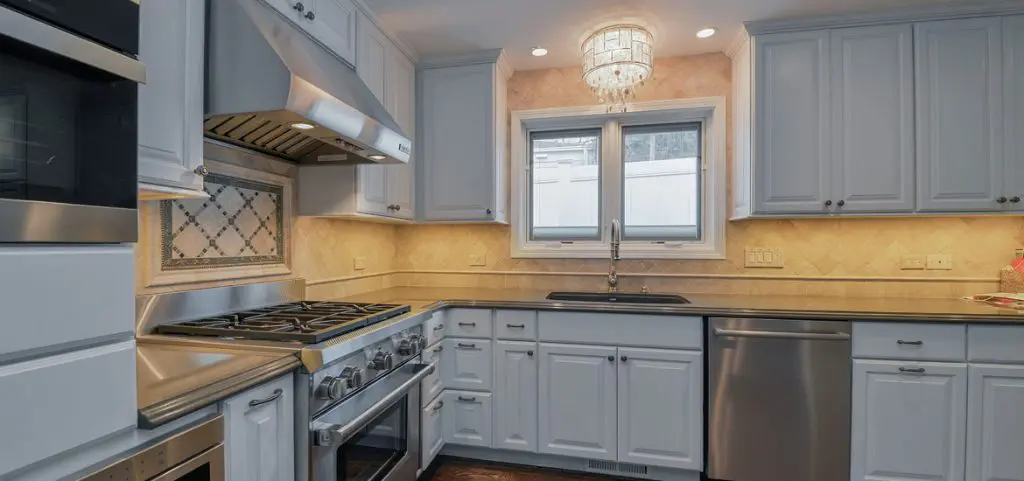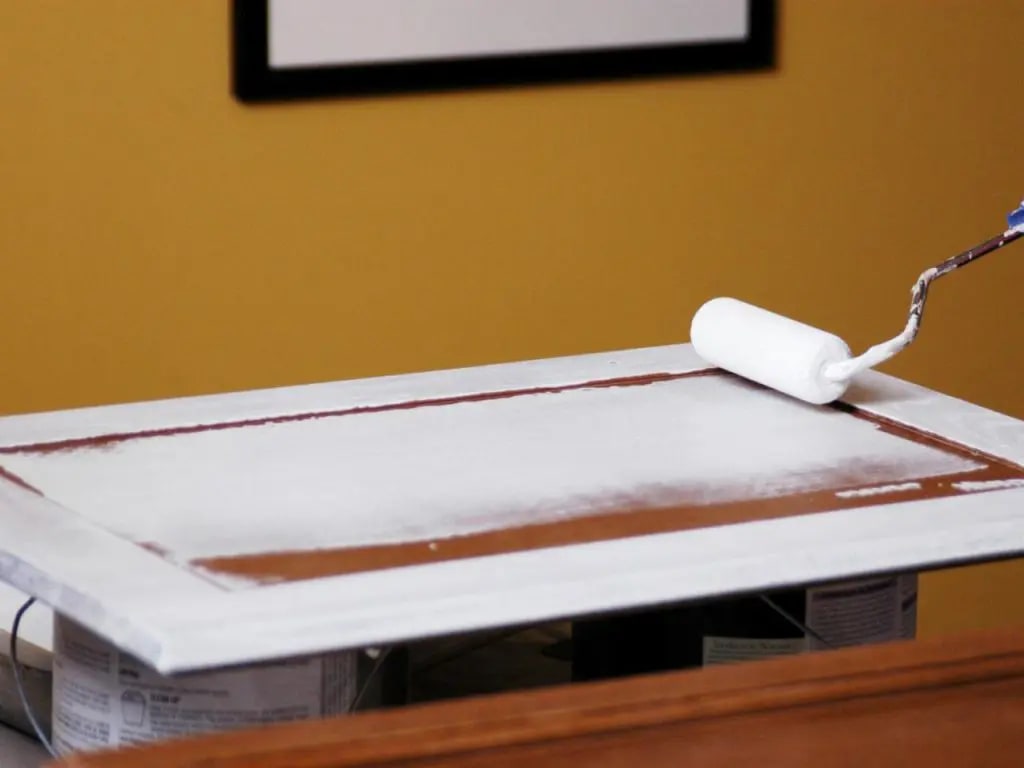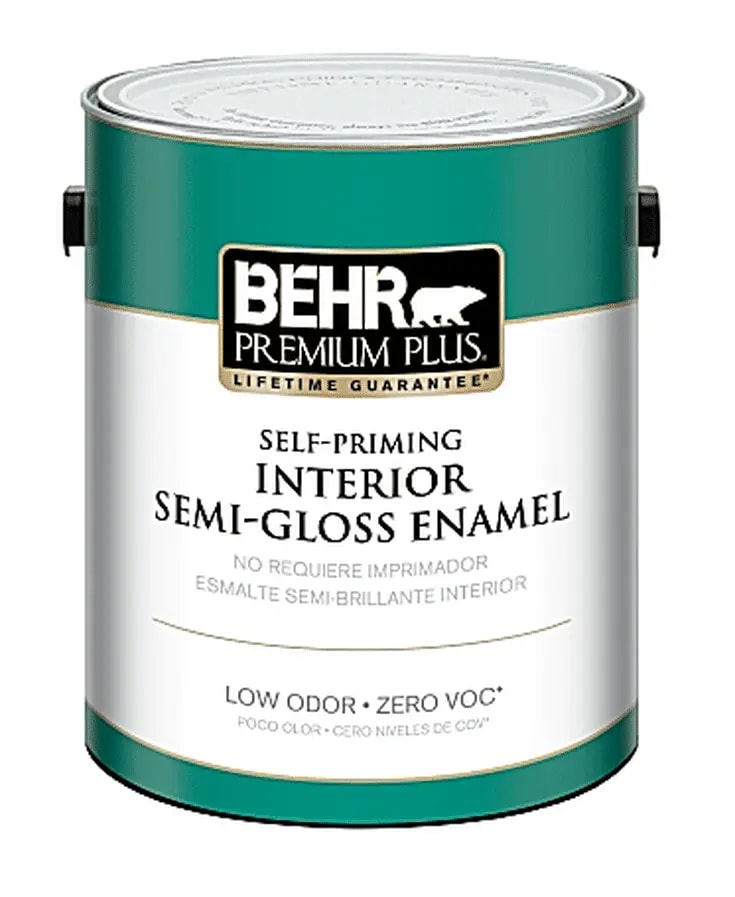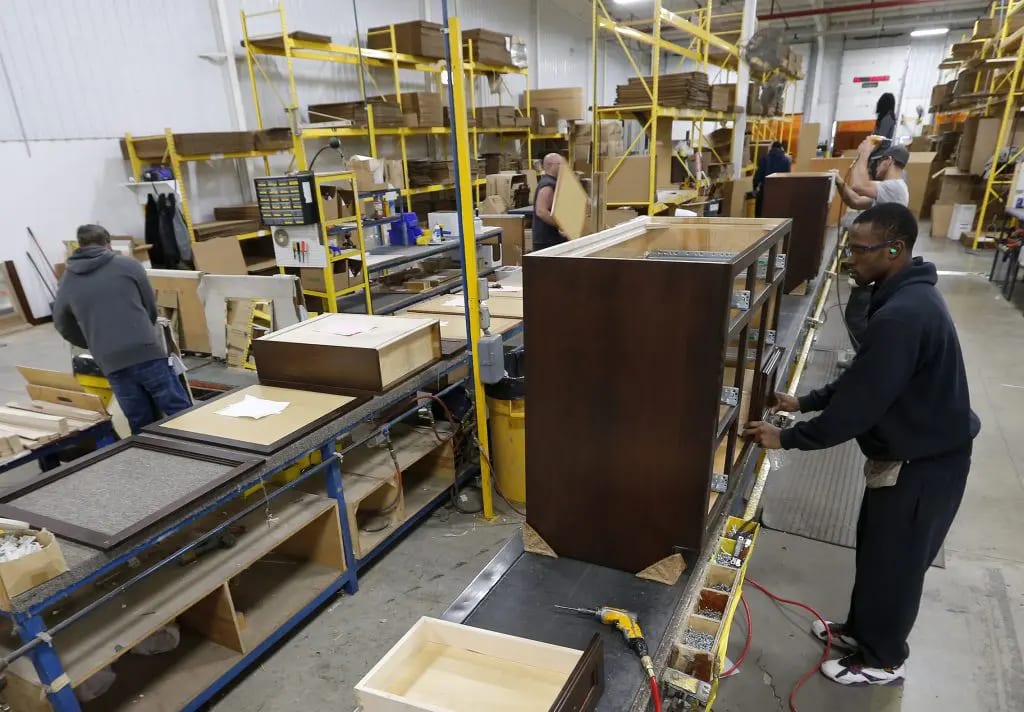Making the right choices for your kitchen isn’t always easy. For instance, simply choosing a finish for your cabinets isn’t simple – it requires that you consider the cost, appearance and durability of them. They need to last and that’s why making the right decision at this point is so important. Such considerations are necessary evils of the great paint versus stain debate.

Stain vs Paint Cabinets
Materials that lend themselves to painting (such as poplar, veneered plywood, or MDF) are typically used to create cabinets that will be pre-painted. They are generally preferred because they have a nice flat knot-free surface devoid of any heavy grain pattern.
Many cabinet manufacturers perform all of their inherent finishing work in-house. They may employ vast innovations such as an elaborate system of spray booths, ovens and overhead drying lines. It is possible to finish hundreds of cabinets each day!
However, not all custom cabinet shops offer or even perform the service of finishing, some are limited to a basic stain and a conversion wash which you’ll usually find in a cabinet interior or as the finished surface of a stain-grade cabinet.
Therefore, when painted cabinets are ordered, they often need to be outsourced to an individual finisher. Then the cabinet will be prepped for paint before the spraying or brushing begins.

{Picture Reference from DIY Network}
A painted cabinet ordered through a custom shop will often be more expensive than a stain-grade, clear-coat finished cabinet. You can’t expect to pay a low price for a custom painted cabinet – you get what you pay for!
Besides the color you want, you’ll need to consider other things such as the paint type and its history or reputation for wearing and chipping. You’re likely concerned whether or not it is water-resistant. If you are going the route of a stock or semicustom, it doesn’t hurt to ask what kind of paint they use and whether or not they offer options.

{Picture Reference from The Spruce}
Of course to begin with, it helps to know a little about the paints that are typically applied to cabinets. There are oil- or water-based ones (some of which include alkyd resins to aid with curing), solid body conversion washes, etc… to aid you in your decision you may want to discuss the impacts of each option, such as potential off-gassing and their general longevity.
You may learn that paint shops may not want to work with certain acrylics, like ones that contain zero volatile organic compounds, though a favorite of the ‘Green’ set. There seems to be debate as to the durability of the environmentally-friendly paint type. However, a low VOC is believed to provide better results. Even now, companies are developing paints with lower VOC’s and the outcomes continue to improve.
Besides the paint itself, its application can be a factor that affects quality. It can be sprayed or back-brushed. A sprayed finish typically leaves a smooth consistent surface but is difficult to touch up seamlessly when needed (especially if a brush is used). In fact, inevitable touch-ups should be treated with care; you’ll want to have specifics such as the paint formulation and details.
If you originally asked for a brushed finish, any future touch ups should blend satisfactorily. Even so, it is entirely possible for the color to change naturally, even substantially over time. If this occurs, a new color match will be necessary for any potential touch ups that may be required later.

{Picture Reference from Houzz}
So, let’s talk about wood finishes. Selecting a stain grade wood for cabinets isn’t the end of the discussion. Factors vary upon your personal inclinations and the shop you’re dealing with. You want to know exactly what you are getting before you have it delivered. There should be no surprises – everyone needs to be on the same page. It is not unreasonable to expect what you select in a showroom to be represented by what is sent to you.
You may decide to have the wood book-matched. That means that the grain pattern is consecutive but flipped two at a time to mirror the grain, like pages in a book. Of course, if budget is a primary concern, you can expect to pay less by planning less. Not everyone is extremely picky and hands on, and that’s ok. Simply leave the potential for variations in color and grain open, without any fuss.

The world of stain grade cabinets isn’t perfect. The shops want to work with you. Larger companies will allow you to order a sample door front before tackling the entire project. Then you have the chance to see generally what will be shipped and installed, although you should still expect minor differences. A custom shop can likely produce a sample door front, too, possibly even show you what will be attached to the plywood face, in the form of a complete piece of very thin wood veneer. If so, it will allow you to better gauge the wood grain and color chemistry. You may ask for stain and finish samples, of course. Glossy, semi-gloss and matte are types of clear finishes that you’ll want to look at, maybe even those that feature UV protection.
It’s always best to have samples of your countertop and backsplash with you when making decisions and ordering. It makes sense, doesn’t it? Have everything in place so you can see how well it all works together.
Choosing cabinet finishes is not an exact science but you can get pretty darn close!





